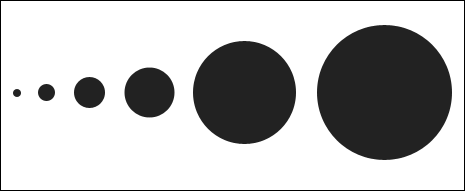

Spirals - associated with nature, birth, evolution, and growth Ĭolors are equally mysterious.Circles and ovals - typically associated with harmony, life, and permanence.They often make us think of action, tension, and even aggression Triangles - often associated with power and energy.They’re balanced and mathematically sound Squares and rectangles - they make us think of stability and safety.Here’s a rough overview of a few of them. Human perception has fine-tuned the meaning of every kind of shape in part. Throughout the early days of human evolution, they’ve forced us to direct our attention towards them.Ī few million years forward, we’ve started using various shapes in typography and art. On the other hand, pointier shapes make us think of danger. Rounder shapes like circles and ovals are generally associated with safety and children - throughout evolution, few round things could harm us. Their effect on our psyche is partly due to our evolutionary upbringing - some shapes instill comfort, others make us cautious. Too often we fail to notice how they influence us too. In our daily lives, we tend to forget that shapes surround us.
#Design element definition series
We can deconstruct the world we live in into a series of basic geometric and natural forms. Lines can be thin and thick, horizontal, vertical, and diagonal, curved and zigzagged, dashed, and dotted - all of them can be used to convey meaning and shape experiences.Įverything is made of shapes which, in turn, are made of lines. More importantly, we can curve and combine them to create rich meaning through different shapes and patterns due to how fundamentally simple lines are. It’s interesting how such a simple element can yield such a strong effect on our attention and have such a complex meaning in the modern visual grammar. We use them to separate and organize space, outline and contour objects, emphasize certain elements, draw attention, and so forth. They have a vast spectrum of functions and purposes. Lines are the most seamless and most powerful elements of design. Basic Design Elementsīefore we dive into the central principles of design, let’s explore its basic elements. Fundamentally, it helps us shape the world we live in and impact the way we perceive reality. As designs become more complex, they evoke feelings that form experiences.

Therefore, it’s safe to say that design is the arrangement of visual elements that aims to solve a real-world problem. Furthermore, it can often be done to the detriment of beauty.Ī design’s end goal is to find an innovative solution this solution’s prettification is a secondary matter. While there’s a lot to debate in this viewpoint, one thing is for sure - the purpose of design is to solve problems. Some designers go as far as to insist that there’s pretty much no overlap between the two. However, its spirit is much more pragmatic.ĭesign isn’t art per se. We often mistakenly believe that it has a decorative function - it’s meant to make things pretty and appealing. An essential first step on the journey towards good design is understanding what it is at its core.


 0 kommentar(er)
0 kommentar(er)
